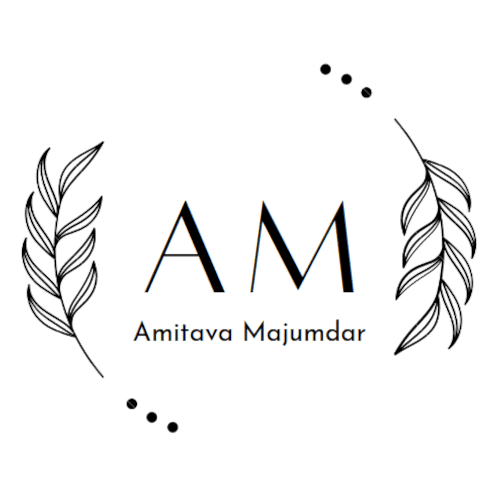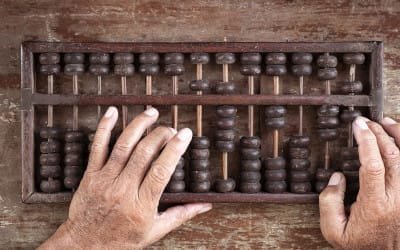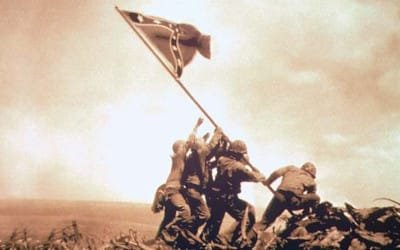Rape Of African Female Slaves In The Antebellum South
The first African slaves arrived in Virginia, North America in 1619. As the plantations of the antebellum south flourished, the African slave trade gained momentum. Between the 16 and 19th centuries, America had an estimated 12 million African slaves. Enslavement of the African Americans officially commenced in the 1630s and 1640s. By 1740, colonial America had a fully developed slavery system in place, granting slave owners absolute life-and-death authority over their slaves or ‘chattels’. Stripped of their identities and rights, enslaved blacks were considered legal non-persons, except in the event of committed crimes.
Documents and research on the slave era, in the antebellum south, are awash with horror stories of the brutal and inhuman treatment of slaves, particularly women. Caught in this demeaning status, enslaved black women endured continual physical and emotional abuse, sexual violations, torture, and sometimes even death.
The Adverse Effects of Sexual Violence on Slave Family Life
By the 1800s, slavery had spread across the antebellum south. Whilst the majority of these slaves were designated as ‘field servants’ and performed chores outside the houses of their masters, a small percentage, mainly women, were employed as domestics or ‘house servants’, mammies and surrogate mothers. Plantation owners, who were under no legal obligation to protect the sanctity of their slaves, generally enforced their status as ‘property owners’ by callous methods.
Many first person accounts (Harriet A Jacobs) and other available data underscore the rampant sexual exploitation of African women slaves. With laws granting owners sweeping powers over their slaves, these women in bondage were habitually ravished, harassed, sexually stalked and used as long term concubines, not only by their masters, but by the owners’ families and friends as well. Slave men, for their part, were rendered powerless to challenge or intervene, as to do so would mean sure death or sale to distant plantations. Progeny or ‘mulattos’ resulting from such rapes were also considered slaves, unless freed by the owner. Despite these infringements on their domestic life, slaves struggled to maintain the integrity of their families.
Blassingame underlines the fact that slave parents tried to shield their young from the brutal realities of plantation life. Dissent, revenge and desertion were dissuaded. Children often internalized the two contradictory behavioral responses of their parents; one submissive in front of the owner, the other castigating the actions of their owner’s action in private. They understood that submissiveness was a way to avoid punishment, but emulated the behavior witnessed in private as the correct model of conduct. The family was an important survival mechanism, for no matter how often the family was broken it enabled the slave to survive on the plantation without becoming totally submissive to, or dependent on the master.
Research based data indicates that slaves, in opposition to being portrayed as subservient, often retaliated, subtly or overtly, to their inhuman treatment. They resorted to destroying crops, disabling machinery and slowing down work. Many stole food, livestock and valuables. Some committed suicide or mutilated themselves to reduce their property value and some even murdered their masters.
Slave parents were also concerned about the interference of owners in their private lives. Southern law defined slaves as moveable property or chattel. Owners, in their attempts to break family strongholds often split families through trading in slaves, taking children away from their mothers. It was this measure of blackmail that often brought more disciplinary action and compliance from the slaves, than any other.
Wielding Of Control And Power Over Black Mistresses?
The law in Virginia declared slaves to be the personal property of masters who could be used as the masters thought fit. It affirmed their total ownership and rights over their slaves, more so over the womenfolk. As absolute property of their owners, enslaved black women were uprooted from their homes and families and forced to comply with the whims of their masters. Sexual abuse could range from sexual coercion to forced breeding for profit. Refusal of sexual overtures led to physical and emotional abuse and often also to the sale of family members to distant farms, never to be seen again. The woman had no safeguard or refuge as the law regarded rape as a mere trespassing of property. Developing relations with fellow slaves, men and women, also proved difficult as the women or their friends could be deported or sold to another property at any odd time. Any challenges by male slaves to such sexual exploitation could mean an end to their own lives.
First person accounts of two slave girls, Harriet A Jacobs and Cecil, both females of African origin, expressed the hurt and distress that arose because of the frequent sexual abuse they had to undergo and the circumstances of their captivity by their masters till they decided to take matters into their hands and escape their captors. Forced to live with and service a man forty years her senior, Harriet was violated daily. Her misery seemed insurmountable for there was no law to protect her from constant insults, violence or even death. She finally managed to escape and went into hiding for seven years, before she could flee to another place.
Enslaved African women, while reluctant mistresses, were often labeled as ‘jezebels’, innately promiscuous or even predatory, by white women. Although they were perceived as entitled to higher status and privileges than other slave women, these privileges were tainted by their compulsion for into sexual submission. Research however indicates that quite a few of these mistresses willingly formed short term liaisons with their white owners for vested interests. Others maintained long-term relationships with their masters, begetting them children. Contemporary sociologist K Sue Jewell described ‘Jezebel’ as a tragic mulatto, indicating that they formed the bulk of black women sold into prostitution.
Plantation Owners’ Use Of Powers To Control Their Mistresses, Their Children And Even Male Slaves
Authorized to use punitive measures, slave owners and their families deployed severe methods on minimal pretexts to ensure slave obedience. A variety of objects and contraptions such as the more commonly used whip and sundry shackles, chains, metal collars, knives, guns, field tools, along with forced walking on the treadmill and even hanging were used to quell disobedience or rebellion. Reasons for punishments included reasons like leaving the plantation without permission, running away, not following orders, or slow work. Slaves were often chastised in front of others in order to set examples to others. The law required slave owners to mandatorily discipline recaptured runaway slaves or face fines. The omnipresent threat of the sale of a loved one was the owner’s ace card to ensure obedience. Enslaved black women continued to be sexual pawns in the hands of their owners. Children that ensued from these actions were also treated as slaves as they took on the status of their mothers, unless freed by the owner.
Slave marriages were considered illegal and couples were frequently separated through sale. It was unsafe for slave couples to reside on the same plantation. Husbands were powerless even in front of the brutal whipping and rape of their wives and the sale of their children. Left with few alternatives, the men had to comply with the demands of their masters. Blassingame however does indicate that owners understood the need to encourage monogamous relationships; a black man, they felt, who cared for his wife and offspring was far less likely to rebel or run away than a ‘single’ slave”. Whilst some masters were compassionate, most slaves knew even small errors could take them to the auction block.
Slave owners were uncomfortable with the fact that slave children might question their authority and the legitimacy of their orders as they were reared to respect their parents. Owners, in order to subvert such developments, established rules and planned activities that minimized the importance of slave family life and emphasized their positions as masters. To this end, they kept a keen watch on activities of their slaves, including such mundane matters like what they ate, how they dressed and when they slept. They would often bribe the slave children or reward bad behavior with toys or gifts.
Slavery Laws And Political Support For The Rights Of Slave Owners To Abuse Their Slaves
The first phase of slavery legalization commenced around the 1630s. Colonial courts and legislatures stated that Africans would serve their masters for life and that their “slave status” would be inherited by their children. A 1667 Virginia act laid down that baptism did not change the bonded conditions or lack of freedom of people. Colonial America had a fully developed slavery system in place by 1740.
The introduction of a law on partus in Virginia in 1662 established that children of enslaved mothers would automatically be slaves, even if their fathers were freeborn white. The law further institutionalized existing power relationships and absolved white men from any legal responsibility of either acknowledging or supporting their children; confining the scandal of illegitimate, mixed-race children to the slave quarters.
Elite families, who formed the bulk of shareholding families, influenced and shaped the political scenario of the land in the antebellum south. Foremost amongst their common concerns was the controlling and ensuring of adequate supply of slave labor. Legislation in the south was designed to protect the rights of owners to their human chattels. Slave codes incorporated in these laws admitted, if grudgingly so, that slaves were human beings and not property like animals. However, these codes instituted many clauses to minimize the possibility of slave rebellion. The codes made it illegal for slaves to (a) educate themselves to read and write (b) to attend church services without a white person, or (c) to testify in court against a white. Leaving of the home plantation without the consent of masters was forbidden. Additional laws sought to restrict the possibility of manumission (the freeing of one’s slaves).
Legislation in all Southern states between 1810 and 1860 restricted the right of slave owners to free their slaves, even by way of wills, because free blacks might inspire other slaves to rebel. Most Southern states consequentially required all freed slaves to leave the state within thirty days of their freedom. Authorities established ‘slave patrols’ to enforce these codes. Locally organized bands of young white men, both slave owners and yeomen farmers, patrolled the night checking that slaves were indeed in their quarters.
The Isolation Of Plantation Life In The South Increased The Incidence Of Rape
Although slavery was widespread throughout antebellum America, the 1830s saw greater demand and concentration of African American slaves in the thriving plantations of the aristocratic south. Legislation of slavery in the southern states, unlike the north, (where there were free slaves), sought to establish that all slaves were owned, mind, body and soul by their owners. African male slaves could be whipped or beaten without reason. Female slaves could likewise be sexually misused at all times without any difficulty.
Slaves, thus bonded, were confined to live and work on the plantations. Permission to leave the premises was only with the written consent of the owners and severely punishable if disobeyed. It served the owners’ dual purpose of labor exploitation and race control. Slave codes incorporated in the legal system restricted their movements and growth. They were not permitted an education, could not testify against a white or attend church services without one. Authorities established ‘slave patrols’ to enforce these codes.
Especially vulnerable in such a situation enslaved African women were the worst victims of a system that designated and treated them as sole chattels of the owners. Such enforced isolation and enhanced vulnerability empowered white plantation owners to rape African slaves at will and contributed to the increase in numbers of rapes.
Conclusions
The antebellum era in America is infamous for its propagation of slavery. African slaves constituted an important element of the flourishing plantations of the antebellum south. Colonial courts and legislatures reduced their status to that of bonded labor.
Legitimizing slavery gave owners sweeping powers of life and death over their slaves, particularly over enslaved black women. Slaves were brutally penalized on minimal pretexts to reinforce submissive behavior and sexual atrocities against women occurred frequently.
Female slaves, designated as property of their white owners, lived with the constant reality of rape. Raped, harassed, sexually stalked and used as long term concubines not only by their masters, but by the families and friends of owners, non- compliance led to physical and emotional abuse and separation of slaves from family members through sale to distant plantations. Laws accommodated the actions of owners, classifying the resultant progeny as slave children and absolving white father of all responsibilities.
Slave men for their part were powerless to intervene as they faced the threat of death However, owners also understood the importance and need of allowing monogamous relationships; as such actions could help in reducing the frequency of run-away slaves.
Slaves struggled to maintain the integrity of their family and culture, even as masters applied their authority on the domestic life of the slave quarter. Slave owners, fearing that slave children might question their authority, established rules and planned activities to affirm their position as masters.
Slaves in the antebellum south were considered the legal property of their owners and had no rights or freedom. Their isolation from the north, where free slaves resided, further detracted from hopes of freedom or better quality of life than was available to them in the south.
More From This Category
Outsourcing: Advantages and Disadvantages
The dramatic changes that have occurred in the global business and economic environment in recent times have not just created great growth opportunities for western businesses, but also provided them with new avenues for improvement of efficiency, productivity and profitability.
The Use of History in the Field of Intelligence in the Backdrop of Major Epistemological Limitations to its use as a Learning Tool
History very clearly affects learning and the course of events (Butterfield, 1965). Historical research has, however, been constantly exposed to external bias on account of its role in the development of social and political consensus through the definition of collective identities, loyalties and exclusions, ever since the 19th century, when it was incorporated as an essential element of school curricula in European countries, aimed at raising soldiers and patriots.
The use of Hadith in the Recording of Early Islam
The Hadith literature does not constitute a primary source of information because it was compiled from various oral reports some years after the death of the Prophet It is, however, considered, revered and appreciated as an important source of Islamic history, moral guidance and religious law, second only to the Quran.





0 Comments